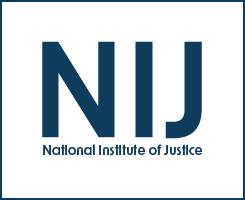American Society of Criminology
Community Influences on Individual Delinquency: A Multilevel Analysis
Women as Victims or Perpetrators of Homicide
Interpreting Performance Measurements - Bases for Judging Agency Performance
Three Perspectives on Performance Measurement - Funders, Practitioners, and Researchers
Towards a Prosecutorial and Defense Production Function Constructing a Measure of Output
Weighted Dispositions - Adding Quality to Performance Measurement
Webinar: NIJ Research Assistantship Program Informational Webinar
This recorded webinar, originally held September 28, 2023, provides information on NIJ’s Research Assistantship Program, which offers highly qualified doctoral students the opportunity to bring their expertise to NIJ to work across offices and program areas to obtain a practical and applied research experience. The program is a research focused professional development opportunity for doctoral students from all academic disciplines. NIJ...
NIJ Multisite Impact and Cost-Efficiency Evaluation of Veterans Treatment Courts
Inclusive Research: Engaging People Closest to the Issue Makes for Better Science & Greater Impact; 2023 NIJ Research Conference Plenary
This panel will discuss what inclusive research is, how to conduct it, and what issues and challenges exist about engaging in it. “Inclusive research” has its history as a participatory research method designed to ensure people closest to the issue or problem under study are authentically engaged in the research process rather than simply being “research subjects.” While community-based participatory research has begun to take on greater prominence in the criminal justice realm, such efforts are largely confined to qualitative research inquiries.
See the YouTube Terms of Service and Google Privacy Policy
Potential Moderation Across Racial Groups in Perceptions of Authoritative School Climate and Peer Victimization and Student Engagement
Gender-Based Violence and the Latinx Community
See the YouTube Terms of Service and Google Privacy Policy
NIJ Multisite Impact and Cost-Efficiency Evaluation of Veterans Treatment Courts
Expanding Research to Examine the Impacts of Forensic Science on the Criminal Justice System
In 2004, the National Institute of Justice created the social science research on forensic sciences (SSRFS) research program to explore the impact of forensic sciences on the criminal justice system and the administration of justice. Much of the early research from the SSRFS program focused on DNA processing and the use of DNA in investigations and prosecutions.
See the YouTube Terms of Service and Google Privacy Policy


